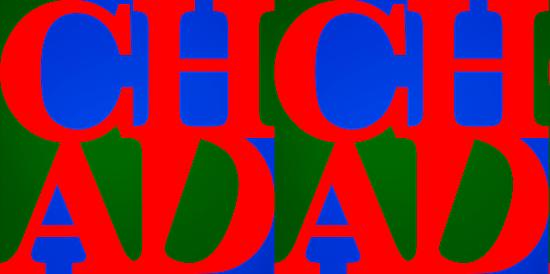The cultural history of AIDS in Denmark (CHAD)
CHAD is the first project to collect, map, and analyse this history. CHAD examines how AIDS emerged, became signified and became embedded in Danish culture during the period 1981–2021.

As 2021 marks the forty-year anniversary of the AIDS epidemic, a new global epidemic demands a deeper understanding of how viral epidemics become signified and transform our social worlds.
Empirically, CHAD builds an archive of 1) mainstream news coverage, 2) activism, campaigns and politics, 3) memories and stories from lived lives and 4) literature, cinema, television and art.
CHAD analyses the cultural construction of AIDS and its material and historical effects by foregrounding how AIDS was originally (bodily and representationally) inscribed in ideologies (of race, sexuality and normality, for instance), but the virus and its effects were also sensed, embodied and understood by people who reacted to and radically reformulated these ideologies and histories.
CHAD analyses how AIDS emerged and how it was understood, signified and (en)countered in four empirical fields: 1) news coverage and dominant representations of the epidemic, focusing on how AIDS emerged as a public theme and how its victims were represented; 2) activism, campaigns and politics, focusing on the ways in which
the epidemic was encountered by haemophiliac and LGBTQ organisations as well as in national politics, health interventions and legislation; 3) memories and stories from lived lives of people in close proximity to the epidemic, especially drug users and LGBTQ persons, focusing on how the epidemic was experienced and embedded in everyday lives and intimacy; and 4) literature, cinema, TV and art that thematised and interpreted the emergence and effects of AIDS.
These four empirical fields provide CHAD with a multifaceted and complex empirical archive. The news coverage privileges sources and voices from mainstream and dominant publics and enables CHAD to understand how the epidemic was framed and became a tool of interpellation, whereas the field of politics enables CHAD to understand the dynamics between the parliamentary regulation and framing of the disease and its subcultural activist responses. The field of lived lives enables CHAD to gain knowledge of voices and memories from ‘below’ – the lived experiences of the epidemic and the local and embodied articulations of the virus. Lastly, the field of art, cinema, television and literature enables CHAD to understand how the virus was discussed and interpreted in art, literature, cinema and popular culture.
AIDS in the news
Postdoc Camilla Bruun Eriksen
This subproject collects a comprehensive archive of AIDS coverage in national news to uncover how AIDS emerged as a public theme in the 1980s and how it has since been represented and signified. Emphasising public scandals we examine how the virus and its victims were framed (i.e. racialised, gendered, sexualised) and labelled in media.
AIDS activism and politics
Postdoc Tobias de Fønss Wung-Sung
Building on archival sources this subproject builds an archive of activist responses and national political responses to the epidemic. We investigate how the epidemic’s politicisation influenced the development of new kinds of sexual and medical citizenship for vulnerable populations.
Lived lives in affected communities
Postdoc Bolette Frydendahl Larsen
Using oral history methods, this subproject collects stories and memories from survivors of the AIDS crisis. We explore how public discourses of and responses to the epidemic shaped the lives and deaths of those who lived with the disease and analyse the narratives and affective registers of memories and experiences.
AIDS in literature, cinema, TV and art
Senior researcher Mons Bissenbakker and PI Michael Nebeling Petersen
Collecting an archive of artistic representations of AIDS in Danish literature, cinema, television and art, this subproject examine how the epidemic has been interpreted in Danish culture to understand how questions of death, disease, normality, identity and marginalisation were discussed.
Concluding project
PI Michael Nebeling Petersen
By assembling the results of the four subprojects, the concluding project effectively write the history of AIDS in Denmark: How did the epidemic take form, and how was it signified by the targeted communities and those afflicted with the virus? How did the state intervene, and how was the virus fought? How was AIDS represented, framed and understood in media, literature and art? How did the crisis affect contemporary notions of identity, intimacy and citizenship? How do the history continue to frame and form our understandings of AIDS, intimacy, belonging, sexuality, identity, guilt, innocence and illness?
CHAD is supervised by a board of associated researchers who discuss and develop the research methods, empirical findings, theory and analysis with the project’s researchers.
- Associate professor Karen Vallgårda (History, UCPH)
- Postdoc Kristian Møller (Media studies, ITU)
- Associate professor Mathias Danbolt (Art history, UCPH)
CHAD’s advisory board gather leading international scholars in the fields of sexuality, history, AIDS and affect. The board evaluate methods, results and publications through workshops, seminars, international research stays and other activities.
- Professor Ann Cvetkovich, (Carlton University)
- Professor Beate Binder (Humboldt University)
- Associate professor Christel Stormhøj (Roskilde University)
- Professor Dirk Gindt (Stockholm University)
- Professor Jens Rydstrøm (Lund University)
- Professor John Mercer (Birmingham City University)
- Associate professor Lene Sofie Bak (UCPH)
- Assistant professor Marika Cifor (University of Washington)
- Professor Matt Cook (Birkbeck University)
- Dr. Monica Pearl (University Of Manchester).
Researchers
| Name | Title | Phone | |
|---|---|---|---|
| Bissenbakker, Mons | Associate Professor | +4535335923 | |
| Eriksen, Camilla Bruun | Associate Professor | +4535325350 | |
| Juul, Anton | PhD Fellow | +4535334581 | |
| Nebeling Petersen, Michael | Associate Professor - Promotion Programme | +4535327467 |
